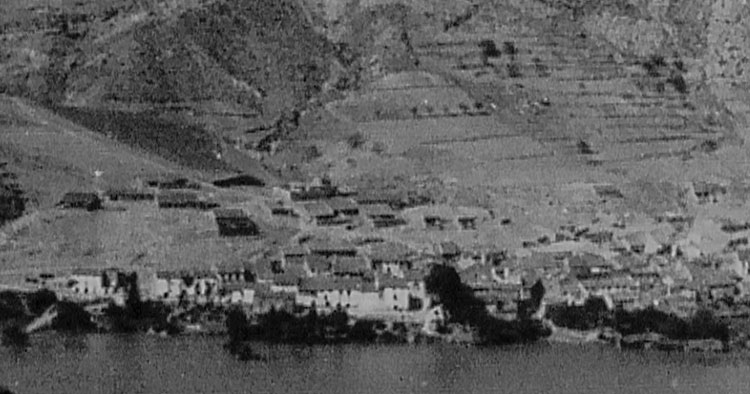Brief history of the Benagéber Reservoir
Thousands of young people, teenagers, boys and girls, and tourists visit the Benagéber holiday centers in Valencia each year, its forests, jetties, reservoir and summer camps in valencia on top of the mountain. Some come to relax a few days, others to go hiking, canyoning, school gatherings between England and Spain, various multi-adventure activities, abseiling, zip-line, from pine to pine, water sports or simply practice and improve a language in the summer camps in Valencia. But of all of them few are those who know the history that hides after their deserved days of rest.
The Benagéber reservoir can be found in the middle of the Túria River, in the province of Valencia. Specifically in the region of Los Serranos, in Benagéber, a town that is part of the Mancomunidad del Alto Turia and that in 2013 had a census of 216 inhabitants. But that was not always the case. Actually the town was divided into three when the monumental works of the dam began in 1933, a part moved to San Antonio de Benagéber (near Valencia city), another to San Isidro de Benagéber (near Monacada), and the third kilometers of the swamp. Needless to say, they were forced to leave their homes, their lands, and all for the common good.
The proper name that he receives now is not the one he had years ago, in fact he even had up to three different names. First Pantano de Blasco Ibáñez, after San Bartolomé, and later the Generalissimo. Because of that and because it was inaugurated in 1952, it is usually attributed to General Franco, but nothing is further from reality.
It all started when the early twentieth century wanted to take advantage of the abundance of water flow in the area, and following the ideas of the time wanted to facilitate the development of the country by investing in large public works, especially in the Valencian Community unattractive in that sense. The government of 1902 designed the National Plan of Hydraulic Works where they wanted to make up to 296 works designed to improve irrigation. Within that plan was the construction of a dam in Lácava, but in 1912 a new project was presented for the area that made the previous one to be rejected, and already in 1933 the head of the Hydrographic Studies Center together with the Minister of Public Works decided on the Benagéber reservoir in Valencia, and in that same year the works began.
Later the Spanish Civil War motivated the paralysis of works that were already very advanced. Once the war is over, the project is resumed and the Francoist authorities decide to use political prisoners to carry out the most dangerous tasks. It is not known how many left their lives in the project. Finally in 1955 its construction is completed, leaving behind a whole history of pain and uprooting. Even today, the descendants of the former inhabitants of Benagéber (and those who still live) meet once a year in August to share and remember their roots.
Thanks to the effort and sacrifice of those men today we can enjoy a reservoir that occupies 722 hectares, with a capacity of up to 228 cubic hectometres. And not only the irrigators of the Valencian community take advantage of it through the Campos del Turia channel, but nature lovers and outdoor activities also have the Valdeserrillas natural reserve of 365 hectares, as well as a holiday center where they celebrate all kinds of summer bivouacs, togetherness, multi-adventure sports, summer camps in Valencia in English, etc. Not forgetting the solar boat for river tours located at the pier of Fuente Muñoz. And all that at only an hour from Madrid.
Now, when you visit the reservoir or spend a few days in your summer camp, you will know how to value everything that the environment hides in its history. Let’s not forget it!
Fair of Peoples Friends of Benagéber
But the region of the Serranos and its reservoir also have other attractions such as the Friends of Benagéber Fair, which is held every year in summer.




